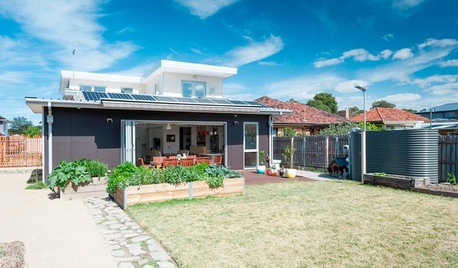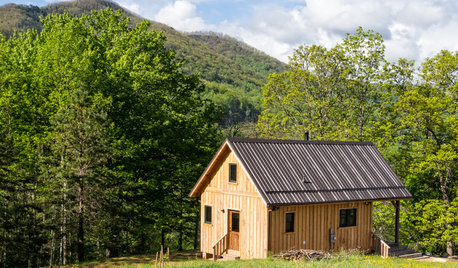What Size generator do I need?
Buz Clanton
2 years ago
last modified: 2 years ago
Featured Answer
Sort by:Oldest
Comments (30)
kevin9408
2 years agokaseki
2 years agoRelated Discussions
What door size do I need to order?
Comments (4)It will and adjustable frame it will not be wood. With the 5/8" Firecode Drywall it should actually be a 6 3/4" jamb depth (6 7/8" if the used 2 layers). Depending on the source and the manufacturer you use the adjustability will be in that range....See MoreHelp!! I have a 42"x66" dining table. What size rug do i need?
Comments (8)42"+72" = 114" 66" + 72" = 138" Is the space you need in the room in order to walk around and sit at the table and you don't have that. You usually want about 12" minimum of space around the rug so that would be 141.5" - 24"= 117.5" 102.5" - 24" = 78.5"...See MoreWhat do I need to know about generators?
Comments (22)It's called an automatic transfer switch that automatically changes the power source when the electricity goes off, and back off when the electricity comes back on. Otherwise, you'd have to go outside and turn the generator on manually. We've had Generac whole house natural gas generators in our last three houses (almost 30yrs) with no issues. That said, our generator installer/maintenance guy has changed his preference to Kohler. You will need an electrician to move the power you want to run with the generator over to the transfer switch after the switch box is installed. The newer generators come in housing that is quieter than years past. Just don't put it near your master bedroom. They are set to test once a week, and it's important to have them set the testing day/time to a day/time when you are usually home so you will know it's working properly. Ours have all been installed by the same man. He started his own company about 10 years ago and we went with him. He also does maintenance twice a year under a maintenance contract. These maintenance visits are important to check the equipment and make any repairs/maintenance. I don't know that having a maintenance agreement with him gets him out faster than if we didn't have one... but the times we have needed him, he comes quickly....See MoreWhat size wooden hood and how much space do I need on left and right?
Comments (8)Some of your questions have been answered many times on this forum, and review of many hood threads will reveal the rationale for the suggestions. Here is a very terse summary: For a 30 inch range use a 36-inch wide hood to overlap rising and expanding cooking plumes. Try for a 24-inch front to back distance, and mount the hood high enough to not hit one's head when bending over the range. (Up to 36 inches with this size) These dimensions give an entry aperture of 3 x 2 = 6 sq. ft. Aim for 90 CFM/sq. ft., resulting in a requirement for 90 x 6 = 540 CFM. This has to be provided in the context of the blower's fan curve, the baffle, hood, and duct pressure losses, and any make-up air pressure loss. As a rough approximation, multiply 540 x 1.5 to obtain 810 CFM, the minimum zero static pressure rating of the hood system blower. Plan on having to have a make-up air system; see relevant threads. Hoods by their nature have to be steel, but can be made without elegant steel exteriors (hood insert) and covered with wood cabinetry. So long as hood cabinetry and nearby cabinets meet the required distance from the range to combustible materials, there is no reason why the cabinets cannot be connected to the hood cabinet-like exterior. You will see many examples just by looking for them. Most major hood manufacturers sell stand-alone stainless steel hoods and steel inserts for wooden cabinet enclosures....See MoreCharles Ross Homes
2 years agokevin9408
2 years agokevin9408
2 years agokaseki
2 years agokevin9408
2 years agolast modified: 2 years agomike_home
2 years agokaseki
2 years agomoosemac
2 years agohomechef59
2 years agofsq4cw
2 years agolast modified: 2 years agojrb451
2 years agofsq4cw
2 years agosktn77a
2 years agolast modified: 2 years agomike_home
2 years agofsq4cw
2 years agolast modified: 2 years agomike_home
2 years agomike_home
2 years agolast modified: 2 years agokevin9408
2 years agofsq4cw
2 years agolast modified: 2 years agomike_home
2 years agolast modified: 2 years agokaseki
2 years agoCharles Ross Homes
2 years agofsq4cw
2 years agokaseki
2 years agomike_home
2 years agolast modified: 2 years agokaseki
2 years agolast modified: 2 years agomike_home
2 years ago
Related Stories

FUN HOUZZEverything I Need to Know About Decorating I Learned from Downton Abbey
Mind your manors with these 10 decorating tips from the PBS series, returning on January 5
Full Story
TRADITIONAL HOMESHouzz Tour: Connecticut Farm Restored for Generations to Come
A man renovates his extended family’s stately farmhouse and land. Sustainable practices are used in gardens, wetlands and recreation areas
Full Story
DISASTER PREP & RECOVERYMore Power to You: How to Pick the Right Generator
If your home's electricity goes, don't let it take your necessities with it — keep systems running with this guide to backup power
Full Story
HOUZZ TOURSMy Houzz: 2 Generations Unite in an Oregon Craftsman
For the love of a little boy (and a few chickens), a resourceful family creates a multigenerational home infused with graciousness
Full Story
HOUZZ TVNew Mexico Oasis Expands Horizons for 2 Generations
A new backyard with big vistas offers a year-round healing destination for a mom, daughter and son-in-law
Full Story
HOUZZ TOURSHouzz Tour: Innovative Home Reunites Generations Under One Roof
Parents build a bright and sunny modern house where they can age in place alongside their 3 grown children and significant others
Full Story
HOUZZ TOURSMy Houzz: Making Room for 3 Generations
A Salt Lake City home creates privacy and independence for grandparents, parents, kids and dogs
Full Story
GREEN BUILDINGHouzz Tour: An Energy-Efficient Home for 3 Generations
This Australian house takes sustainability and accessibility to a new level
Full Story
HOUZZ TOURSHouzz Tour: 10 Acres, 3 Generations and Many Animals in North Carolina
Check out a throwback-style cabin that celebrates simplicity, reclaimed materials and family
Full Story
CONTEMPORARY HOMESHouzz Tour: 2 Wings for 3 Generations on a Vermont Lake
An extended family enjoys a spacious waterfront home influenced by farmhouses and Japanese architecture
Full Story




kaseki